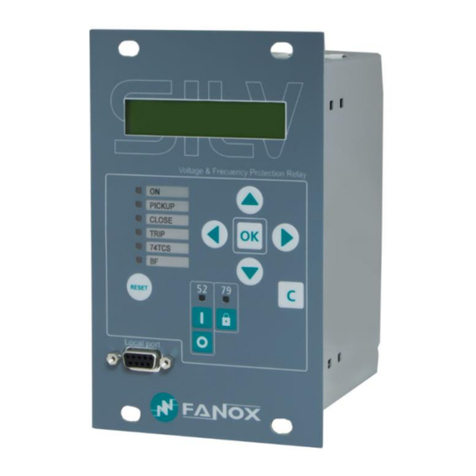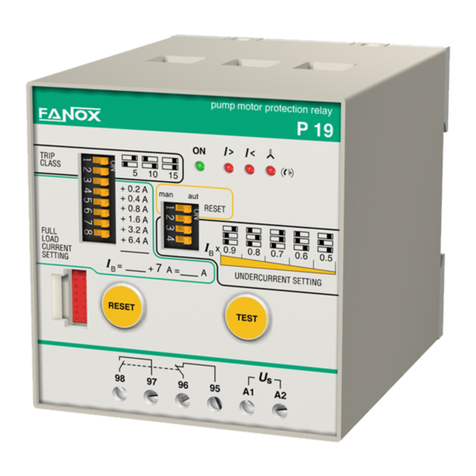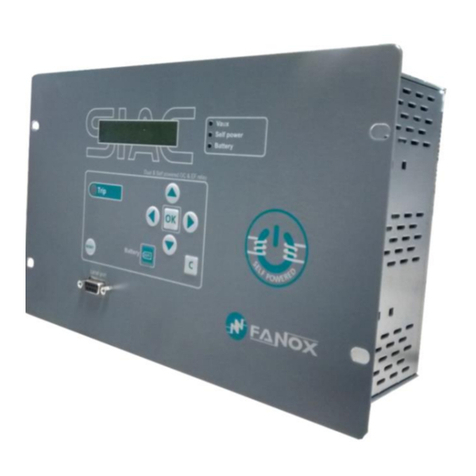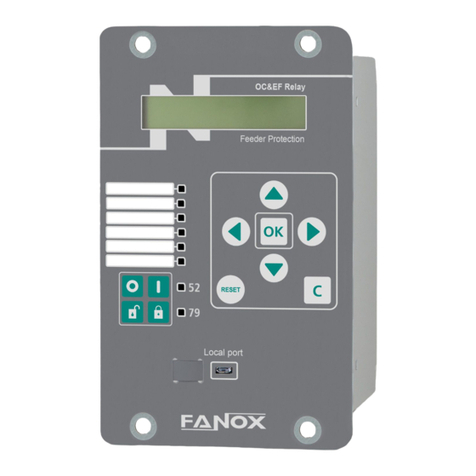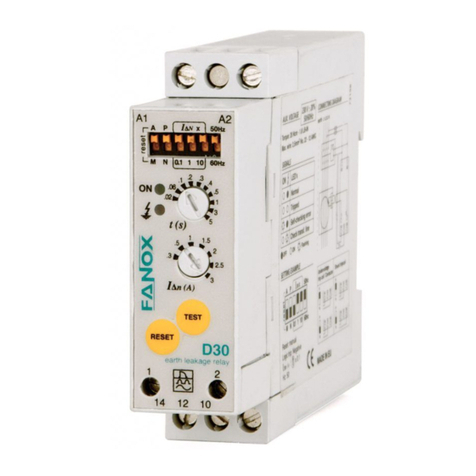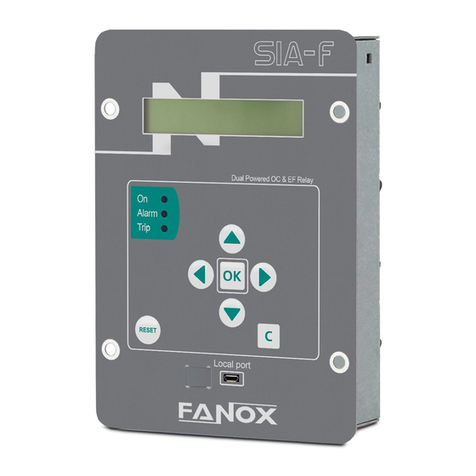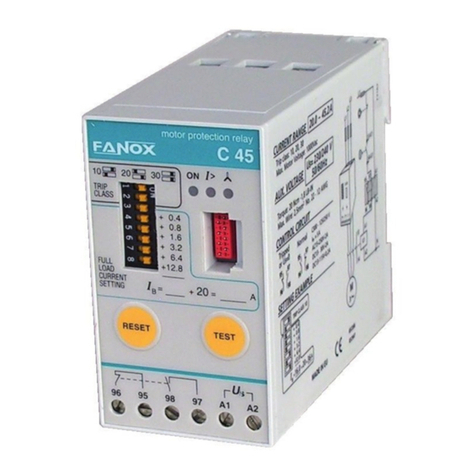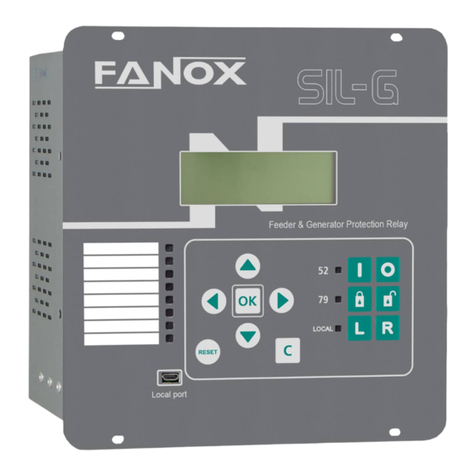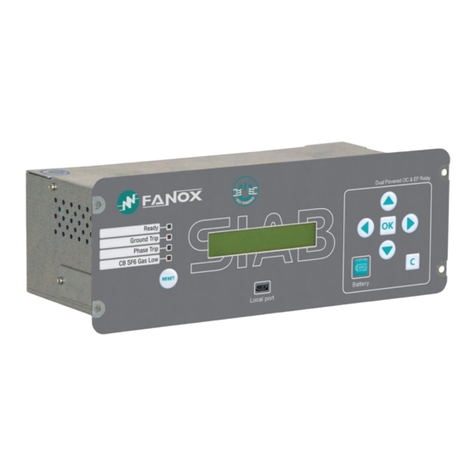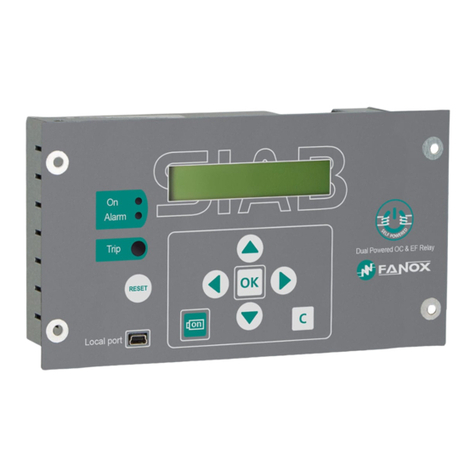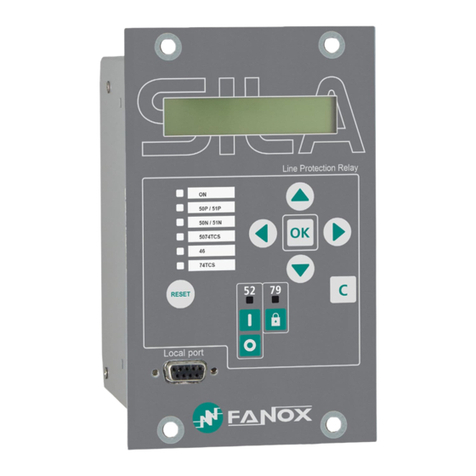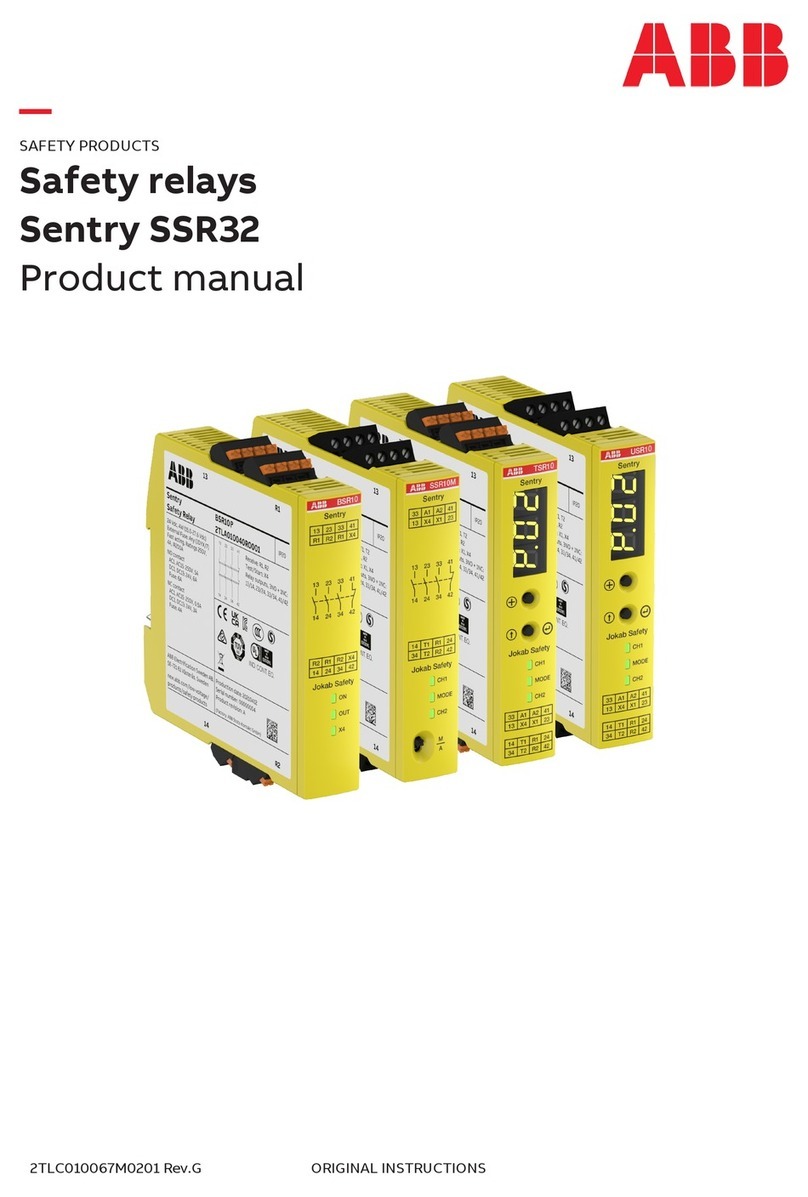www.fanox.com Installation_Guide_SIAB110FC232AC_Rev. 01 2 / 36
1......RECEPTION & INSTALLATION..........................................................................................3
1.1. Relay unpacking.............................................................................................................3
1.2. Relay verification............................................................................................................3
1.3. Powering the relay up....................................................................................................4
1.4. Relay intallation.............................................................................................................. 6
1.5. Relay rear part ................................................................................................................ 7
1.6. Connection diagram.......................................................................................................8
2......USER INTERFACE..............................................................................................................8
2.1. Relay front part............................................................................................................... 8
2.2. LED indicators................................................................................................................9
2.3. How to install SICOM software ..................................................................................... 9
2.4. Setting-up the session: Password and access levels................................................9
3......FUNCTIONAL DIAGRAM ..................................................................................................10
4......TECHNICAL SPECIFICATIONS........................................................................................11
4.1. Phase CT and neutral CT selection............................................................................13
4.2. IEC60255-151 Curves...................................................................................................14
4.3. IEEE Curves..................................................................................................................14
5......OPENING MECHANISM....................................................................................................15
6......PROGRAMABLE LOGIC CONTROL................................................................................16
6.1. Outputs.......................................................................................................................... 16
6.2. Leds...............................................................................................................................18
7......FLOWCHART..................................................................................................................... 19
7.1. Test menu......................................................................................................................19
7.2. Direct Access................................................................................................................20
7.3. Menus............................................................................................................................21
8......COMMISSIONING..............................................................................................................29
8.1. Thermal resistance.......................................................................................................29
8.2. Self powering................................................................................................................31
8.3. Measurements .............................................................................................................. 31
8.4. Protection functions .................................................................................................... 31
9......SIAB110FC232AC REGISTRY..........................................................................................35
